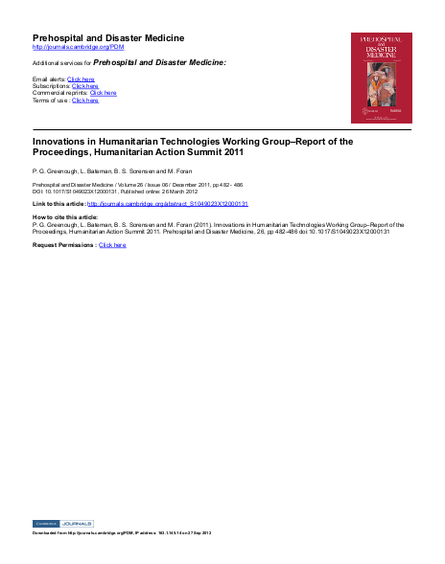
Over the last decade, the global rapid rise in the use of information and communication technologies (ICT) for individuals and communities has posed both promising opportunity and significant challenges for organizations engaged in crisis and disaster response. The 2009 Humanitarian Action Summit (HAS) convened a range of humanitarian stakeholders engaged in exploring the evolving role of ICT, particularly the application of mobile communications, satellite imagery, and mapping, to humanitarian crises and disaster response. The HAS working group (WG) is composed of experts versed in these technologies and their potential for operational field applications as well as humanitarian practitioners who have operational experience with a general understand- ing of ICT applications. In 2009, the WG broadly acknowledged several critical issues that directly addressed the utility, efficiency, and feasibility of implementing these new technologies in humanitarian field operations, including: 1. Mobile communications might have a radical effect on future crises based on the realities that more individuals in the world own cell phones than do not (current global cell phone subscriptions topped five billion by the end of the decade).1 2. Given an intact network, short messaging service (SMS) texts, email, or web- based messages have the potential to be sent from anyone, anywhere, at anytime. 3. Open platforms can receive text or voice data from anyone, anywhere, at anytime; and audio, visual, or written narratives concerning an event can be shared anywhere at anytime.
